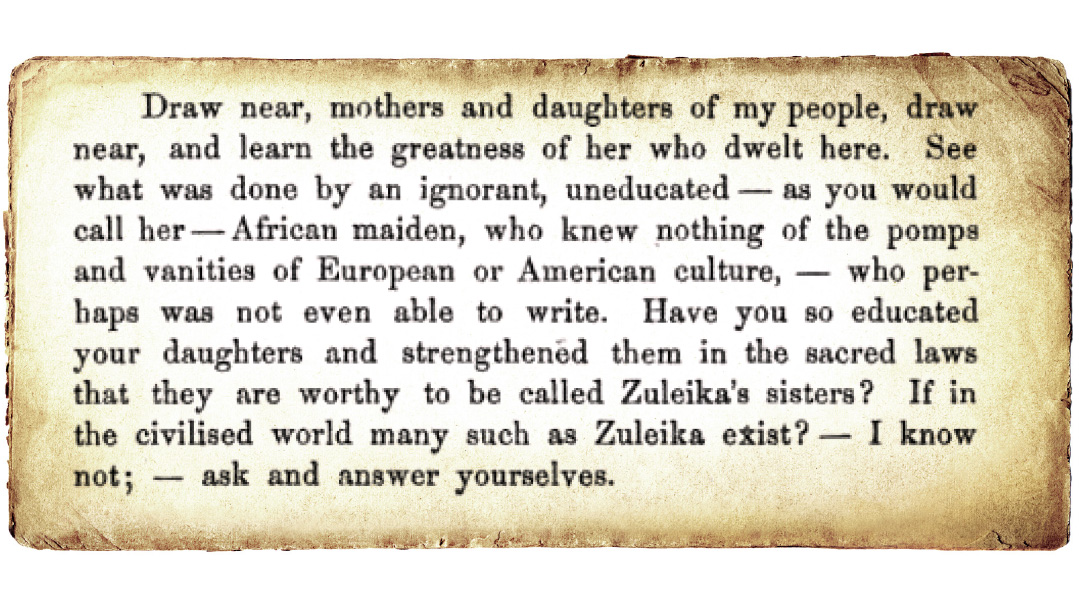Holy Heroine of the Maghreb
| April 18, 2023In the 1830s, a family in Tangier, Morocco, that traced its roots to the 1492 Spanish expulsion drew unwanted fame

Title: Holy Heroine of the Maghreb
Location: Fez, Morocco
Document: Eight Years in Asia and Africa: From 1846 to 1855
Time: 1834
London
Monday, 9th June 1834
Information is received this afternoon of a Jewess named Sol Hatchwell only between fourteen and fifteen years old, having been beheaded at Faz by order of the Sultan under the judgment of the Oolamma, for having abrogated Islamism after her recently renegading from the Faith of her father.… It is said, the sheik of the Jews urged her not to desert her ancient Faith and to be persuaded, that all which was threatened was done only to frighten her, for that, if she saw the knife at her throat, she might be sure she would be pardoned.
—Edward William Auriol Drummond Hay, British Consul to Morocco
IN the 1830s, a family in Tangier, Morocco, that traced its roots to the 1492 Spanish expulsion drew unwanted fame. Chaim Hatchouel, a respected talmid chacham and merchant, together with his wife Simcha, raised their children Yissachar and Solica to be G-d-fearing Jews in an overwhelmingly Muslim country. The Torah classes Chaim conducted at home imbued his young daughter with a strong sense of identity and faith that would prove decisive as events unfolded.
When Solica was 17 and still living a sheltered existence in her parents’ care, she was falsely accused by a Muslim neighbor of having converted to Islam, and then reneging. Such a crime was punishable by death under Islamic law, and she was duly arrested and thrown into a dungeon by the local pasha. Initially, they attempted to entice her with honor, riches, and status should she agree to adopt Islam. When she categorically refused, the governor delivered an ultimatum:
He pointed out the peril in which she was involving herself, and repeated his determination of subduing her resolution. But the young Hebrew rejected his allurements, depreciated his gifts, and defied his power, even to death.
“I will load thee with chains,” said the governor. “Thou shalt be torn by wild beasts, and see no more the light of day; thou shalt lie, perishing with hunger, and lamenting the rigor of my anger and indignation, for thou hast provoked the wrath of the Prophet, and slighted his laws.”
“I will submit tranquilly,” replied Sol, “to the weight of your chains; I will allow my limbs to be torn asunder by wild beasts; I will renounce for ever the light of day; I will die of hunger; and when every torture you can command has been endured, I will scorn your anger and the wrath of the Prophet since they are unable to conquer even a weak woman, and do but show your impotence in the sight of Heaven, whose strength you boast, to gain one proselyte to your creed.”
—Eugenio María Romero 1837; English translation in Bentley’s Miscellany edited by Charles Dickens 1852
Solica’s frantic parents did all in their power to secure her release, and enlisted the assistance of the Spanish vice consul in Tangier, Don Jose Rico, to no avail. The matter was brought to the Sultan’s attention, and Solica was dispatched under armed guard to Fez.
It seems that rabbinical leaders in Fez were allowed to meet with Solica, but they were unable to secure her release. The proud, obstinate Jewess would not forsake her faith under any circumstances, and was sentenced to death. In a cynical maneuver, her father Chaim was required to fund the cost of transporting her to Fez as well as her execution. Having exhausted his financial resources in his futile efforts to save his daughter, the aforementioned Spanish consul supplied the funds.
On June 5, 1834, Solica was publicly beheaded in the Fez town square per the Sultan’s orders, and Solica the Tzadeket entered the pantheon of Jewish heroines who sanctified the Name of Hashem with their tragic deaths. It was noted that the Hebrew year of her death was 5594, generally written as tav-kuf-tzadi-daled, which is an anagram for Tzadeket.
Holy Site in Fez
The Fez Jewish community was able to arrange for her burial in the local Jewish cemetery, and her gravesite quickly became a pilgrimage destination for those seeking to pray in proximity to this holy martyr. In an irony bordering on shameless hypocrisy, local Muslims would also pray at the gravesite of the one they referred to as Lalla Solica (the holy lady Solica).
The Rambam in Fez
The ancient Jewish community of Fez was host to many Torah leaders throughout its storied history. During the years 1159–1165, the Rambam resided in Fez with his family while on the run from the Almohads, who wreaked havoc on Jewish life throughout the Iberian Peninsula and North Africa in the 12th century. While there, the Rambam penned his famous Iggeres Hashmad, which clarified the laws of sacrificing one’s life in the face of Almohad threats, and he also authored his landmark Peirush Hamishnah.
(Originally featured in Mishpacha, Issue 957)
Oops! We could not locate your form.






